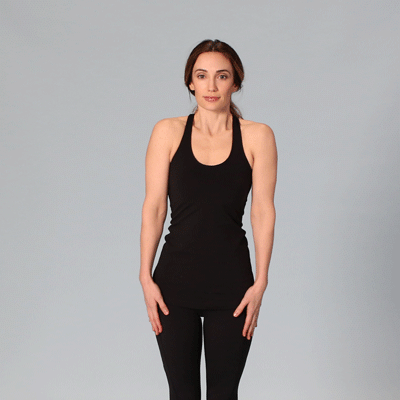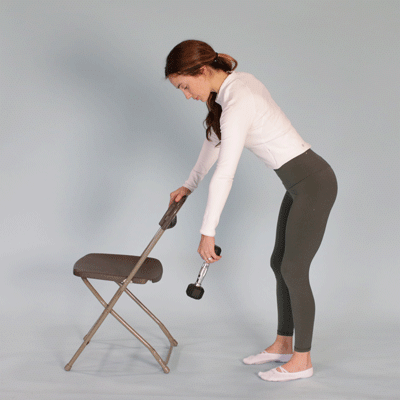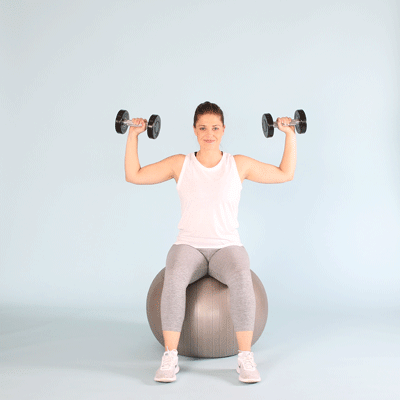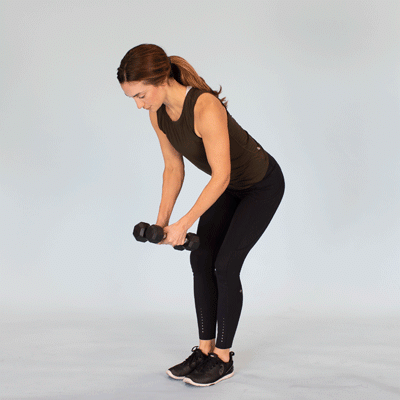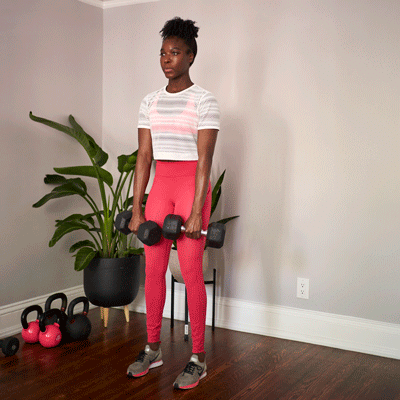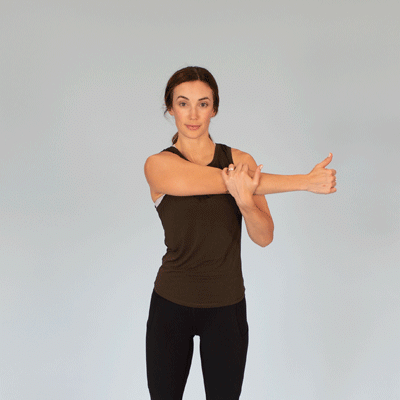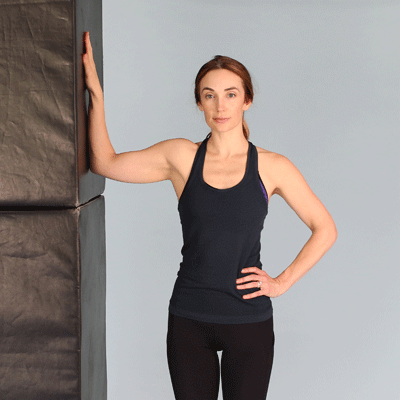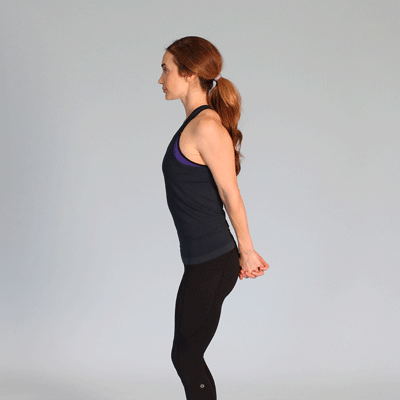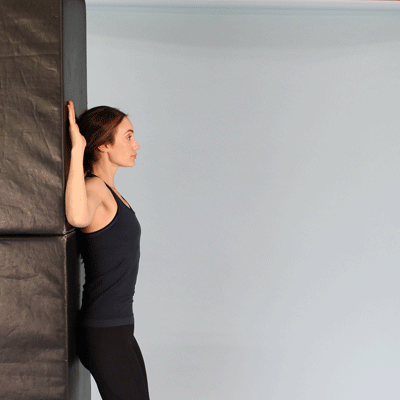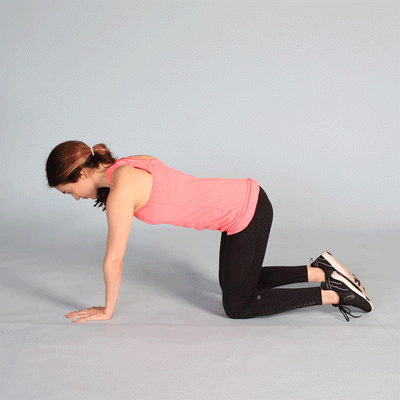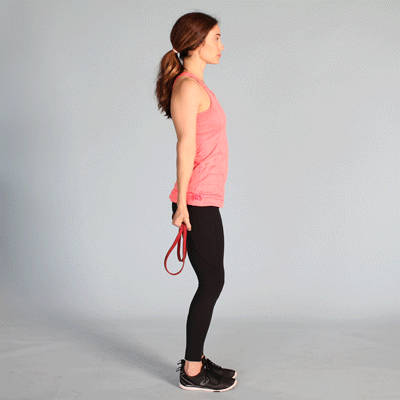Poor shoulder mobility can be hella uncomfortable. And sadly, you prob can’t just shrug it off. The good news? We have 11 exercises that can get your shoulders in tip-top shape.
Ready to release all that tension? Here’s a rundown of the 11 best shoulder mobility exercises.
1. Shoulder roll
The role of the roll is to relax your shoulders and reduce upper-body tension. It’s also a great pre-workout stretch.
To do a shoulder roll:
- Stand tall with a straight spine.
- Relax your arms and shrug shoulders toward ears.
- Move shoulders in a circular motion for 30 seconds.
- Repeat in the other direction.
Repeat 2–4 times.
Pro tip: Imagine there’s a string pulling your head straight up.
2. Shoulder pendulum swing
This swing sesh is an awesome arm stretch. It can help increase your range of motion, giving you a smoother flow of motion.
To do a shoulder pendulum swing:
- Support your right arm on a table or chair.
- Let left arm relax and hang down.
- Gently start to swing left arm.
- Start to make small circles.
- Gradually make the circles bigger.
- Reverse the direction after 1 minute.
Repeat for a total of 4–6 minutes on both arms.
Pro tip: You can sit or stand for this exercise. Do what feels the most comfortable.
3. Dumbbell shoulder press
This shoulder press can increase your strength and range of motion.
To do a dumbbell shoulder press:
- While standing or sitting, hold a dumbbell in each hand at shoulder height.
- Bend your elbows at a 90-degree angle.
- Extend through elbows as you lift the weights overhead.
- Slowly return to the starting position.
Do 10–15 reps.
Pro tip: Don’t overdo it with the weights. The idea is to increase mobility, not bulk up.
4. Reverse fly
This exercise targets your upper back muscles. It’s an important strengthening exercise for folks who sit behind a computer a lot.
To do a reverse fly:
- Sit or stand with knees bent and lean forward.
- Hold a dumbbell in each hand (this also works with resistance bands).
- Let arms hang down to your calves.
- Gently raise the weights out to the sides until elbows are at shoulder height.
- Slowly lower the weights back to the starting position.
Do 10–15 reps.
Pro tip: Don’t hunch or arch your back.
5. Standing row
This upright exercise can improve strength in your traps, rhomboids, and biceps.
To do a standing row:
- Grasp two dumbbells or a barbell.
- Get your hands in line with your thighs.
- Let the weights hang in front of you with your arms straight down.
- Turn your palms toward your body.
- Lift the weights straight up toward your chin and exhale.
- Pause for a moment.
- Return to the starting position.
Do 10–15 reps.
Pro tip: Opt for a light weight so you can ease into the motion.
6. Shoulder cross-arm swing stretch
You might remember this one from middle school gym class, but it’s actually legit. It’s a great way to stretch your rotator cuff.
To do a shoulder cross-arm swing stretch:
- Stand with feet a little less than shoulder-width apart.
- Bring left arm up to just below your shoulder.
- Place right hand on left elbow.
- Slowly pull left arm across your body.
- Use right hand to gently hold the position for 30 seconds.
- Repeat on the other side.
You can do this one as much as you want, but 3 times on each side usually does the trick.
Pro tip: Take deep breaths as you hold the stretch. It’s hella relaxing.
7. Doorway stretch
This stretches your shoulders one at a time, which is great if one is tighter than the other.
To do a doorway stretch:
- Stand in a doorway with one foot slightly in front of the other.
- Bend your elbows at a 90-degree angle.
- Bring left arm up to shoulder height.
- Place left palm and forearm flat against the doorframe.
- Slowly lean into the stretch.
- Hold for 30 seconds.
- Repeat on the other side.
Repeat 2–3 times on each side.
Pro tip: This shouldn’t be painful. Don’t stretch past your comfort zone.
8. Reverse shoulder stretch
Here’s another one for all the homies hunching over screens all day. It’s also a top-notch choice if you breastfeed or slump your back a lot.
To do a reverse shoulder stretch:
- Stand straight up.
- Clasp hands behind you.
- Gently pull shoulders back and lift your chest.
- Hold for 10 seconds, then relax.
Do 3–5 reps and go deeper each time.
Pro tip: You might naturally tip forward a bit, but don’t lean forward. It increases your risk of pulling a muscle.
9. Shoulder wall slide
This is a great move to test your range of motion and improve it over time.
To do a shoulder wall slide:
- Stand with back against a wall and feet slightly away from the wall.
- Bring your elbows to a 90-degree angle with hands facing up.
- Press elbows and forearms into the wall.
- Slowly slide arms against the wall over your head.
- Gently squeeze shoulder blades together.
Do 3–5 sets of 5–8 reps.
Pro tip: Don’t forget to engage your core!
10. Thread the Needle shoulder stretch
This classic yoga pose will release shoulder tension and back stiffness.
To do a Thread the Needle shoulder stretch:
- Start on all fours on the floor, keeping hands under shoulders.
- Tuck in your toes.
- Open the chest to the left.
- Move your right arm under your chest.
- Extend left arm toward the sky.
- Keep both knees and right arm on the floor for support.
- Hold for 30 seconds, then repeat on the other side.
Pro tip: Gaze toward your raised hand and breathe deeply.
11. Chest expansion
There are many ways to do this exercise. It’s great for relieving stress in your upper back, chest, and shoulders.
(One way) To do a chest expansion:
- Stand while holding a band or towel behind you, just under your butt.
- Keep arms extended with hands at about shoulder width.
- Slowly pull hands backward while keeping arms straight.
- Roll shoulders backward, raise chin, and open up your chest.
- Hold and breathe for 7–10 seconds before returning to the starting position.
- Repeat for 1–2 minutes total.
Pro tip: Keep your spine aligned the entire time.
Shoulder mobility relates to range of motion — a joint’s ability to complete a variety of movements. It’s affected by the soft tissue around the joint (like your muscles, tendons, ligaments, and joint capsules).
Mobility is different from flexibility, which is the ability of a muscle or muscle groups to lengthen through a range of motion.
Lots of lifestyle factors can result in shoulder tension. These can build over time, creating discomfort and decreasing mobility.
Causes of poor shoulder mobility:
- poor posture
- chronic stress
- excessive stretching or overworking your joints or muscles
- activities like sitting for too long or lifting something super heavy
- bending forward or hunching a lot (This includes texting or scrolling the ’gram 😭.)
Shoulder tightness can also be a symptom of health conditions such as:
- gout
- lupus
- arthritis
- Lyme disease
You don’t need an out-of-whack back or tight shoulders to reap the many benefits of stretching. Here are some of the perks:
- Relieves stress. Stress and muscle tightness often go hand in hand. Stretching can loosen your muscles and make you feel more relaxed. Try to focus on areas where you hold the most tension, like your neck, upper back, or shoulders.
- Increases flexibility. Stretching on the reg can help increase your flexibility. This can make everyday activities easier and can prevent a decline in mobility as you age.
- Increases blood flow. Research suggests that stretching could improve circulation and increase blood flow to your muscles. This could shorten your workout recovery time and reduce delayed onset muscle soreness.
- Perks up your posture. A small 2015 study found that a combo of stretching and strengthening exercises could encourage correct spinal alignment and reduce musculoskeletal pain.
- Helps prevent back pain. A solid stretching routine reduces your risk of muscle tension. (PSA: You shouldn’t overwork an existing injury.)
- Gets you ready to rumble. A good stretch before a sweat sesh is always a good idea. Studies suggest that stretching can prep your muscles for movement.
Nailing proper form can make or break your workout. It can reduce your risk of injury and enhance the effectiveness of each stretch.
Here are a few tips to keep your form fab:


